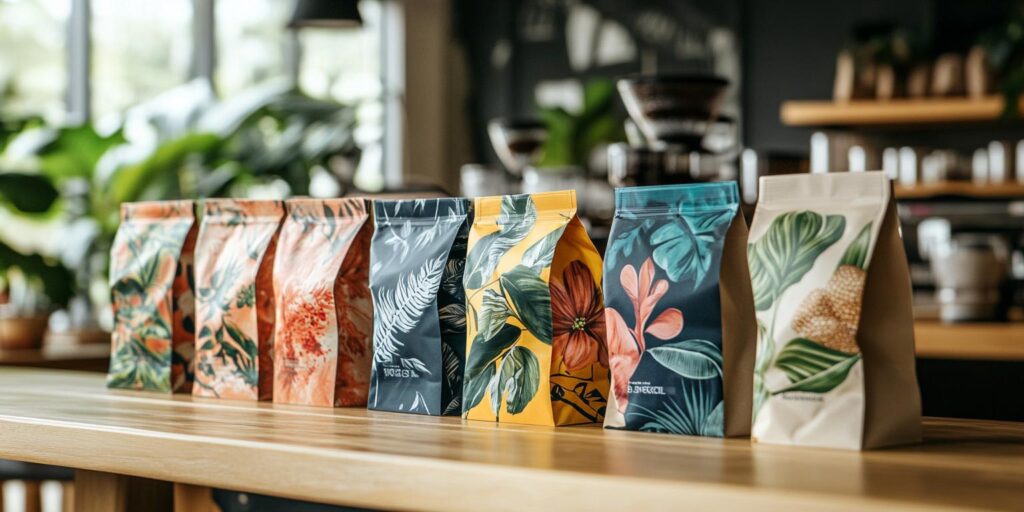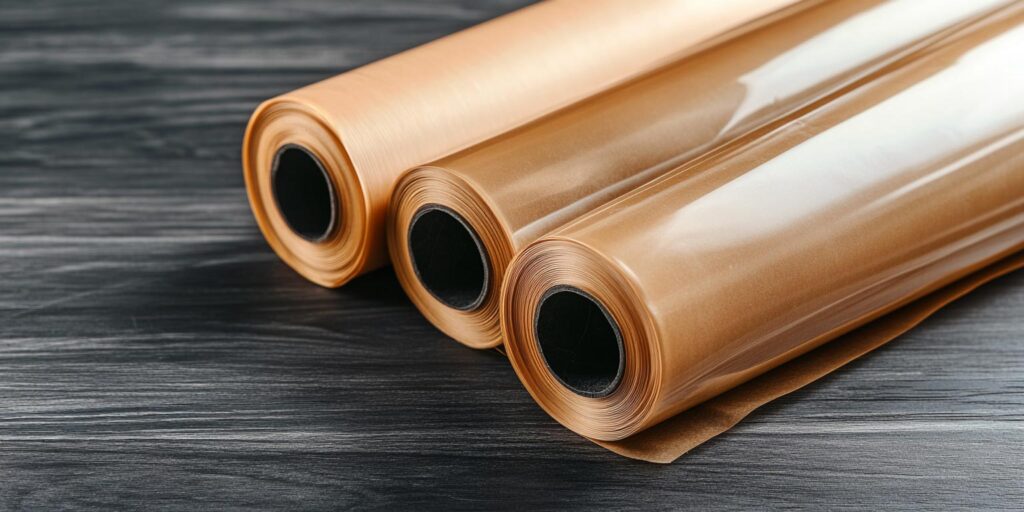
El mejor material para el reciclaje de bolsas de café suele ser el papel, especialmente cuando no está recubierto o está forrado con un material compostable o reciclable.
Las bolsas de papel para café son altamente reciclables y, a menudo, están hechas de recursos renovables, lo que las convierte en una opción ecológica. Además, las bolsas fabricadas con mono-materiales como ciertos plásticos, por ejemplo el polietileno (PE), también se consideran buenas para el reciclaje ya que pueden procesarse fácilmente sin necesidad de separar capas. El aluminio, aunque también es reciclable, debe usarse en forma pura y no laminado con otros materiales para asegurar que se pueda reciclar adecuadamente.
Diferentes tipos de empaques reciclables para café
El empaque de café viene en diversas formas reciclables, dependiendo de los materiales utilizados y de los procesos necesarios para descomponerlos. El empaque a base de papel, por ejemplo, es ampliamente aceptado en la mayoría de las instalaciones de reciclaje. Las bolsas plásticas de mono-material, hechas típicamente de un solo tipo de plástico, también son reciclables a través de programas especializados. Las latas de aluminio y algunos tipos de bolsas flexibles están ganando popularidad por su capacidad de reciclarse sin procesamiento complejo. Estas opciones están diseñadas para minimizar residuos y ayudar a los consumidores a reducir su huella ambiental sin comprometer la frescura del café.
Lista y comparación de diferentes tipos de empaques reciclables para café
- Bolsas de papel para café – Hechas de recursos renovables y ampliamente reciclables, son ecológicas y biodegradables. Cuando se recubren con un material compostable, siguen siendo reciclables y ofrecen durabilidad y frescura.
- Bolsas plásticas de mono-material – Están hechas de un solo tipo de plástico, generalmente polietileno, lo que las hace más fáciles de reciclar que las bolsas de plástico multicapa. Brindan una excelente barrera contra la humedad y el aire, manteniendo el café fresco.
- Latas de aluminio – El empaque de café en aluminio es 100% reciclable y puede reciclarse indefinidamente sin perder calidad. Es duradero y ofrece una gran protección contra la luz y el aire, aunque suele ser más costoso que el plástico o el papel.
- Bolsas flexibles – Algunas bolsas flexibles hechas de películas plásticas reciclables están ganando popularidad. Ofrecen excelente protección para el café, pero deben recolectarse a través de programas especiales de reciclaje para garantizar un procesamiento adecuado.
¿Qué tipo de empaque no se puede reciclar?
No todo el empaque de café es reciclable, especialmente aquellos hechos de materiales multicapa. Las bolsas que combinan capas de plástico, aluminio y papel son difíciles de reciclar porque requieren una separación de materiales que la mayoría de los centros de reciclaje no pueden realizar. Además, ciertas bolsas biodegradables o compostables, si no están claramente etiquetadas, pueden no ser aceptadas en programas de reciclaje, ya que requieren procesos distintos para su descomposición. Los empaques con recubrimientos pesados, laminados o aditivos químicos también pueden considerarse no reciclables y terminar en vertederos.

Formas de reutilizar, reaprovechar o reciclar empaques de café
Existen numerosas maneras de extender el ciclo de vida del empaque de café a través de la reutilización, el reaprovechamiento o el reciclaje. Una opción en crecimiento es Hydroblox, un sistema que reutiliza plásticos, incluidos ciertos empaques de café, para fabricar materiales de construcción destinados a proyectos de gestión de agua e infraestructura. Otro enfoque innovador es ByFusion, que convierte plásticos no reciclables en bloques que pueden usarse en la construcción, ayudando a reducir los desechos en los vertederos. Además, los consumidores pueden reutilizar las bolsas de café para almacenamiento, manualidades o como forros para macetas. El compostaje en el hogar es una opción para los empaques compostables, mientras que los programas de reciclaje para plásticos de mono-material y aluminio ayudan a reducir el impacto ambiental.
Formas de reutilizar, reaprovechar o reciclar empaques de café:
- Compostaje – Para bolsas compostables hechas de materiales orgánicos.
- Reciclaje – Para bolsas de papel, plásticos de mono-material y aluminio.
- Reutilización – Usar las bolsas para almacenamiento, manualidades o jardinería.
- Hydroblox – Transformar empaques usados en materiales de construcción.
- ByFusion – Convertir plásticos no reciclables en bloques de construcción.
- Upcycling (Reaprovechamiento creativo) – Convertir las bolsas en accesorios o elementos decorativos para el hogar.
Estos métodos ofrecen soluciones creativas y prácticas para reducir los residuos, asegurando que el empaque de café pueda contribuir a un futuro más sostenible.
